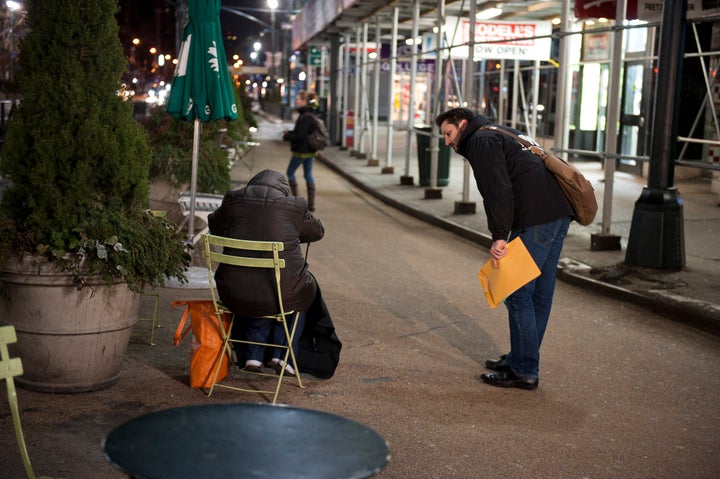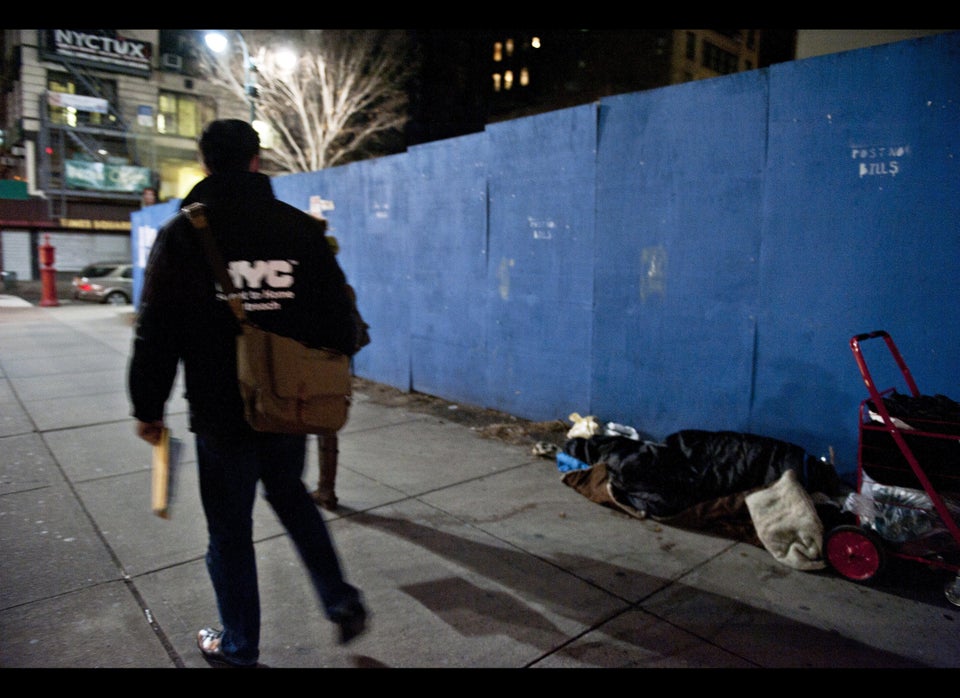
While most New Yorkers were long curled up in bed at 1 a.m. Tuesday, Victoria Mohl was fighting back the January wind as she beelined for a shivering homeless man dozing off on a bench.
"Do you have a place to stay tonight?" the 19-year-old college student asked.
For 10 years, the Department of Housing and Urban Development has tasked volunteers -- nationwide -- with counting the number of people sleeping on the streets on a given night in January. The participants from 4,000 communities walk up and down their assigned blocks to conduct the point-in-time homeless count, asking each person they encounter if he or she has a place a stay, and jotting down the responses for HUD and its partnering agencies to analyze.
"The work we do tonight paves the way for the work that we do the rest of the year," Seth Diamond, Department of Homeless Services commissioner, told The Huffington Post before the count got underway in New York. "It does provide a good gauge of how we're doing. It's a good baseline check."
While the national counts offer only a "snapshot" of homelessness, such a picture helps hold HUD accountable, HUD Deputy Press Secretary Tiffany Thomas Smith said. The organization now relies, in part, on such data to see how well it's implementing the Obama administration's plan to end veteran and chronic homelessness by 2015.
Though HUD's analysis of the data will not be available for a few months, a few recent studies indicate that some figures may prove to be troubling.
Homelessness among female veterans doubled in the four years leading up to 2010, according to a Government Accountability Office report released earlier this month. The general population may see an increase, too, since the rental market is inundated with people who have foreclosed on their homes and millions remain out of work, the National Alliance to End Homelessness reports.
On the local level, however, some promising results may serve as a model for cities that are struggling.
In New York City, for example, homelessness has declined 40 percent since 2005, according to the Homeless Outreach Population Estimate, the organization that coordinates the homeless count in New York City.
Part of what distinguishes Gotham's success from other cities is its unique transitional housing options. These semi-private residences invite homeless people in who may need to get sober before they've started getting help, so they can get housing first and then start addressing any changes. Strict rules and unsettling experiences at communal shelters sometimes drive homeless people away from staying there, said Joe Hallmark, deputy director for the Manhattan Outreach Consortium, which has placed 750 people in transitional housing since 2007.
"We meet basic needs before requiring specific behaviors," said Hallmark, whose organization has a 90 percent retention rate among its transitional housing residents. "Let's get the person housing first and then work on getting them off drugs."
These homeless housing trends presented themselves among at least one group on Monday night. A handful of cadets from West Point said that the homeless people they met either lived in transitional housing or were adamantly opposed to staying in shelters. One man in his 50s told Mohl, a sophomore at West Point, that he avoids homeless shelters because he contracted foot fungus while staying at one in the past.
But regardless of what the figures and the interviews ultimately conclude, trekking through dark, frigid streets -- without shelter or a bathroom until 4 a.m. -- will open the eyes of tens of thousands of volunteers to the harsh realities that the estimated 636,017 homeless people face every night.
"It's one thing to hear x, y, z number of people are homeless. It's something different to see three or four of them and I've only gone three blocks," said Geoffrey Easterling, 22, a junior at West Point. "Numbers can't paint the picture of somebody's actual life."
CORRECTION: The headline originally said the volunteers are from HUD. They are actually Department of Homeless Services volunteers. HuffPost regrets the error.

